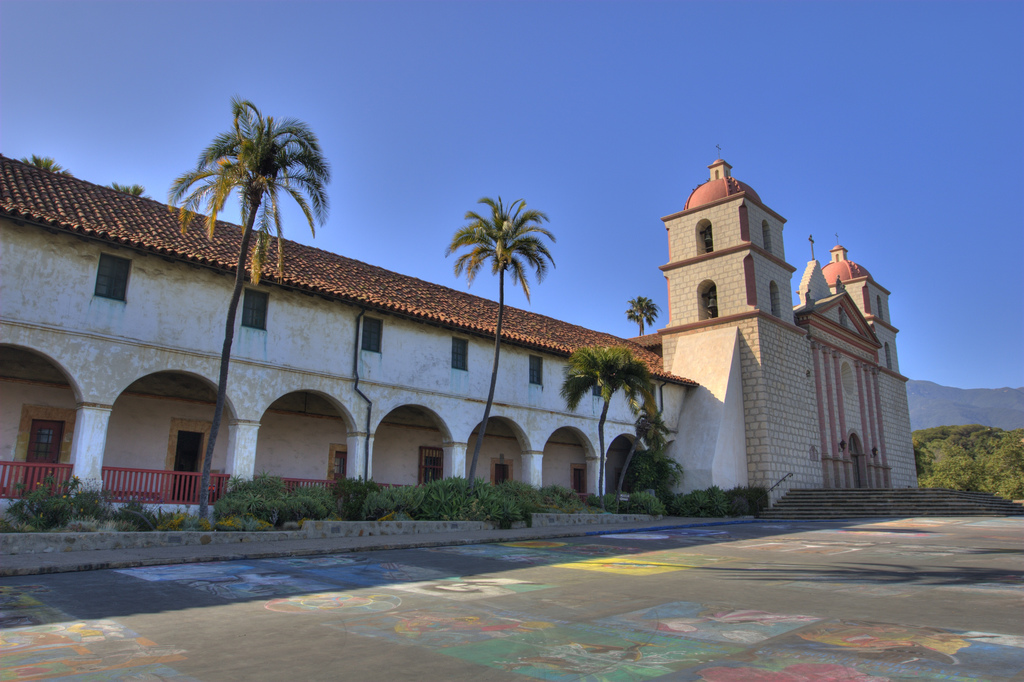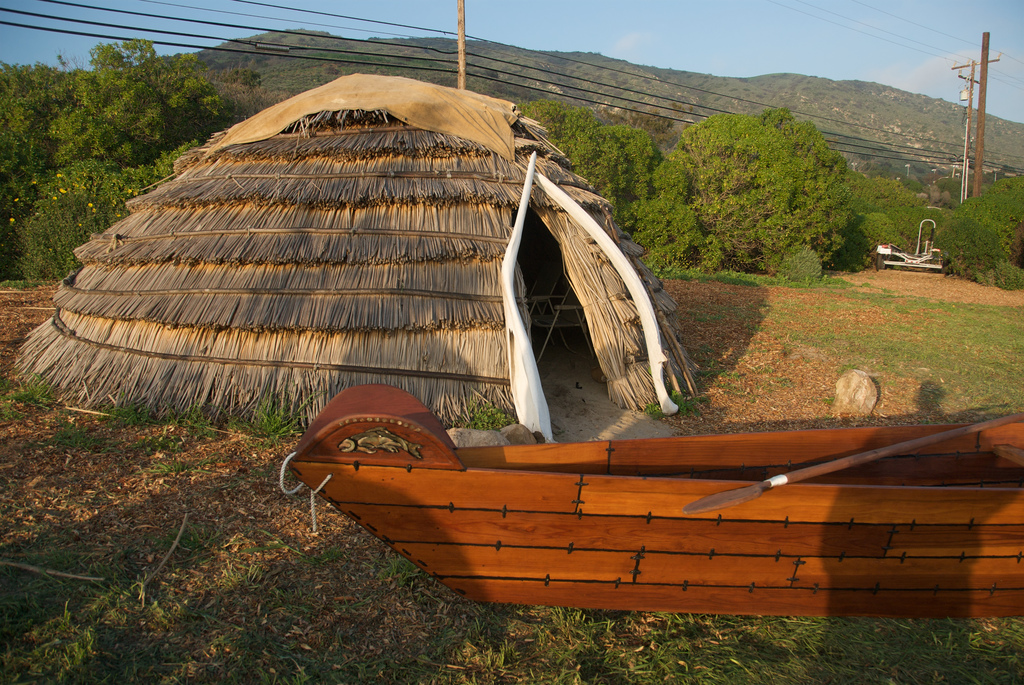
Santa Barbara Mission by Frank Kehren
Like many Californian towns and settlements along the coast, Santa Barbara bears the mark of Spanish occupation in the form of its Mission (definitely worth a visit for the view from the tower alone – Santa Barbara’s was the tenth to be built in California by the Spanish Franciscans, who came to convert the Chumash and other indigenous tribes to Christianity in the late Eighteenth century). Although it is still widely spread that the Spanish missionaries aimed to promote peace between different tribes, the non-native diseases they introduced along with this ‘peace’ decimated the population of Native California.

Chumash Hut by The City Project
In 1822, Spain ‘lost’ control of California to Mexico, the result of which was further deterioration of native housing (dome-like structures made from willow branches and whale bone), cultural practice and further deaths from introduced diseases such as the Malaria epidemic of 1833. Chumash land was taken, divided up and given to high ranking Mexican families and even Spanish settlers who became ‘loyal’ to Mexican rule. Surviving displaced tribe members had to make do working on ranches or as labourers for the new ‘land owning’ families. In 1834, the United States ‘took California’ from the Mexicans but did not recognise the rights of its indigenous people.
In 1901, a small but significant change came with the founding of the Santa Ynez Reservation land on which Chumash Indians could freely set up home. The settlement of the land took a while as the people had to cope with adapting traditional practice to modern living. But adapt they did and today there are a number of Chumash descendants living on this land who are now on their way to attaining economic self-sufficiency due to revenue created from the nearby Chumash Casino, hotel and spa.
Like their ancestors before them, who lived in balance with nature, protecting the environment and natural habitat is a prior concern for the Santa Ynez Chumash community. They have set up their own environmental office which is in the process of developing several management programs. These include: renewable energy development (focusing on solar power and alternative fuel for vehicles); natural resource protection (which not only involves habitat management but also educating their children about the importance of natural resource protection); solid waste management; ‘greening’ tribal operations in the casino and beyond and forming an environmental advisory committee made up of people from the community to ensure that all voices are heard and that all remain engaged with the schemes.

